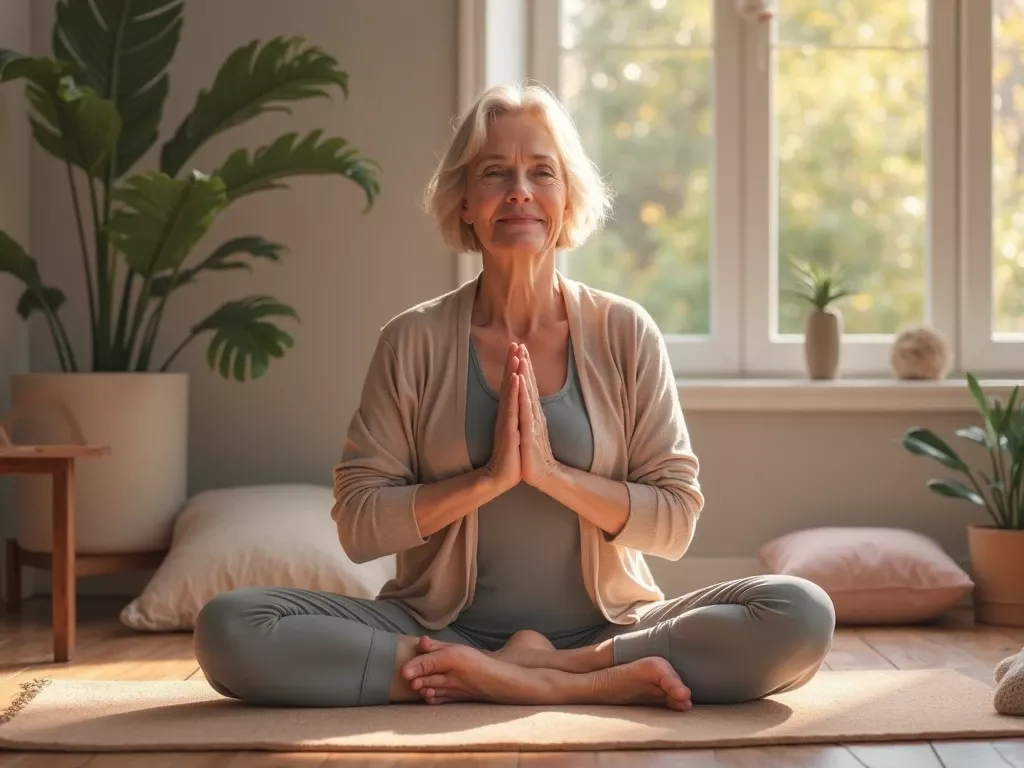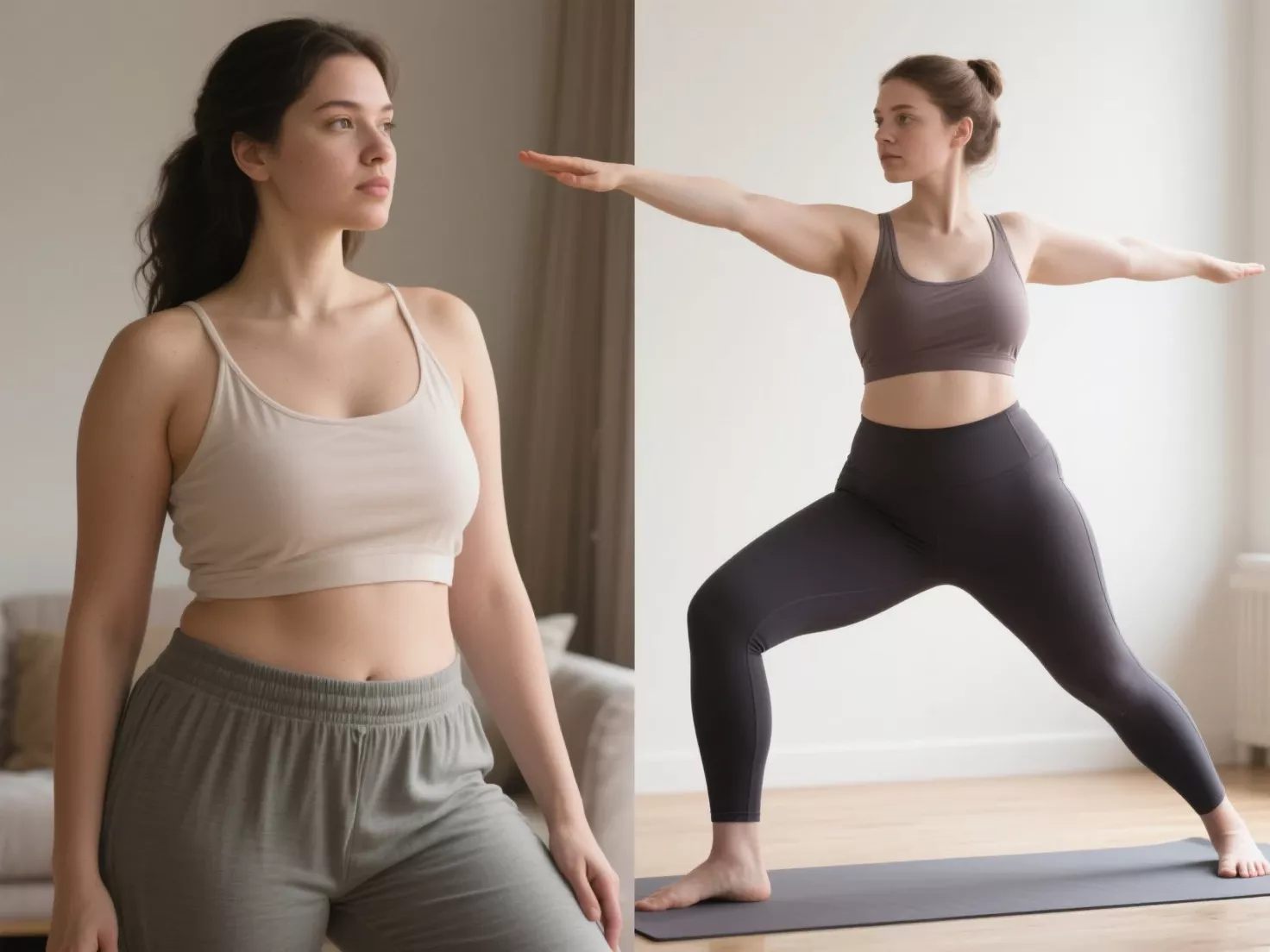Absolutely not — 40 is not too late to start yoga. In fact, it’s an ideal time.
Whether you’re looking to improve flexibility, reduce stress, strengthen your body, or reconnect with yourself, yoga is a powerful practice that can be started — and deeply enjoyed — at any age, including your 40s and well beyond.

Many people start yoga in their 40s or 50s, and some even become yoga instructors later in life.
Yoga is not just about bending into advanced poses — it’s about learning to breathe, move, and live with awareness.
If you’re 40 or older and wondering if yoga is for you, here’s everything you need to know.
🧘♀️ Why Starting Yoga at 40 Is Actually Perfect
1. You Know Your Body Better
By 40, you’ve likely gained awareness of your body’s strengths, limitations, and needs.
This self-knowledge is an asset in yoga, where listening to your body is more important than achieving perfect form.
2. Your Goals Are Health-Focused, Not Ego-Driven
People in their 20s might chase the flashy poses, but at 40+, you’re more likely to value joint health, flexibility, balance, stress reduction, and emotional well-being — the very things yoga excels at.
3. You’re More Mentally Ready
With age often comes a deeper desire to slow down, stay grounded, and find balance.
Yoga offers mindfulness and breathing practices that help manage anxiety, mood swings, and the emotional demands of adult life.
4. It’s Never About Age — It’s About Consistency
Yoga rewards patience and regularity, not youth or speed.
A beginner at 40 who practices mindfully will progress faster than someone younger rushing through poses without connection.
🔬 What Science Says About Starting Yoga After 40
Research supports yoga’s benefits for adults over 40:
-
A 2020 study in The Journal of Bodywork and Movement Therapies found that yoga improves flexibility, balance, and mobility in adults over 40 more effectively than standard exercise.
-
A 2017 study published in Frontiers in Human Neuroscience reported that people aged 40–65 who practiced yoga had stronger cognitive function and lower stress levels than those who didn’t.
-
Yoga also helps reduce age-related health risks such as osteoporosis, arthritis, back pain, and high blood pressure.
✨ Benefits of Starting Yoga at 40
| Benefit | Why It Matters at 40+ |
|---|---|
| Improved Flexibility | Keeps muscles and joints limber as natural stiffness increases |
| Better Balance and Stability | Reduces risk of falls or injuries as coordination changes |
| Joint and Bone Health | Supports bone density and joint lubrication |
| Stress Reduction and Sleep Support | Helps manage mid-life stress, anxiety, and insomnia |
| Boosted Energy and Mood | Encourages endorphin release and emotional regulation |
| Digestive and Hormonal Support | Aids in perimenopause symptoms and digestive issues |
🧘♂️ Best Yoga Styles for Beginners Over 40
Not all yoga is the same — here’s what to consider if you’re just starting out:
| Style | Best For |
|---|---|
| Hatha Yoga | Gentle, slow-paced, ideal for beginners |
| Yin Yoga | Long-held, deep stretches for flexibility |
| Restorative Yoga | Fully supported poses for relaxation |
| Iyengar Yoga | Focus on alignment and use of props |
| Viniyoga | Customized, therapeutic approach to movement |
Avoid jumping into advanced Power Yoga or Ashtanga right away unless you’re already active and injury-free.
🛠️ Tips for Starting Yoga at 40
-
Start Slow
Don’t push your body into deep flexibility too fast. Yoga is a journey, not a competition. -
Use Props Without Shame
Blocks, straps, and bolsters are your best friends. They make poses accessible and safe. -
Focus on Breath Over Form
Deep breathing is where yoga’s real transformation happens. Don’t worry about “looking good.” -
Try a Class or Guided Video
Find beginner-focused teachers who offer modifications for different bodies. -
Be Kind to Your Body
You might feel stiffness, especially at first — that’s normal. Progress is inevitable with consistency.
🙋 Frequently Asked Questions
1. Am I too inflexible to start yoga at 40?
No one is too inflexible to start yoga. In fact, inflexibility is one of the best reasons to start! Yoga will gently increase your flexibility over time.
2. Can I get injured doing yoga at this age?
With proper guidance and by avoiding aggressive pushing, yoga is one of the safest forms of movement. Listen to your body and use props.
3. How often should I practice yoga to see results?
Even 2–3 times per week can yield improvements in flexibility, sleep, mood, and energy. Daily short sessions (10–20 minutes) are even better.
4. Can yoga help with perimenopause or hormonal shifts?
Yes. Yoga helps regulate hormones, improve sleep, support emotional balance, and reduce hot flashes and mood swings.
📅 A Sample 20-Minute Beginner Yoga Routine for Over-40s
-
Cat-Cow (Spinal Mobility) – 2 minutes
-
Downward Dog (Modified or With Blocks) – 2 minutes
-
Standing Forward Fold (Bend Knees) – 2 minutes
-
Low Lunge (Anjaneyasana) – 2 minutes per side
-
Seated Twist (Gentle) – 2 minutes per side
-
Legs-Up-the-Wall (Viparita Karani) – 5 minutes
-
Savasana with Deep Breathing – 5 minutes
🌟 Final Thoughts
It is never too late to start yoga. In your 40s, you are wiser, more self-aware, and more emotionally mature than ever before — which actually makes you better prepared to embrace the heart of yoga than someone younger.
You’re not “behind” — you’re exactly where you’re meant to be.
“Yoga is not about touching your toes. It’s about what you learn on the way down.” – Jigar Gor
So unroll your mat, take a deep breath, and start where you are. At 40, your body is ready — and so is your mind.



